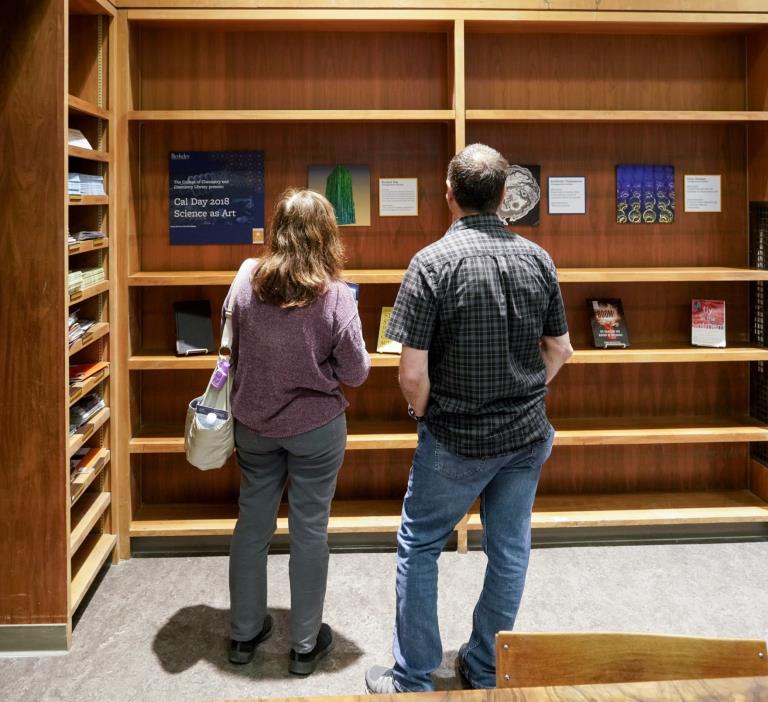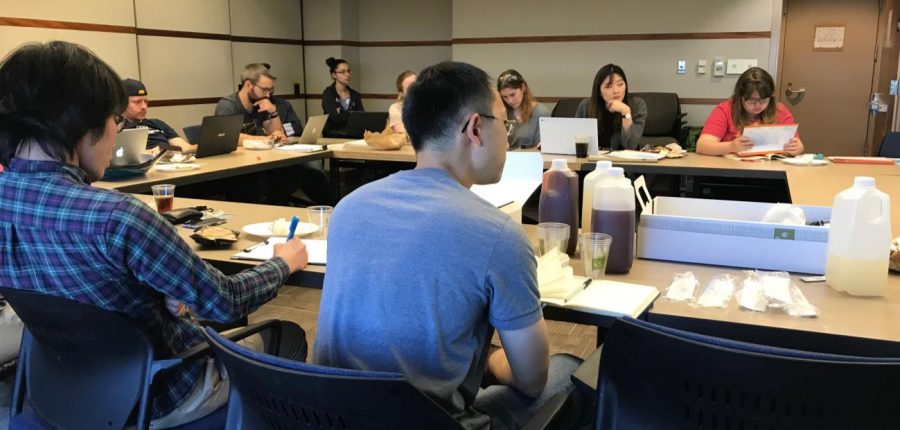Kortney Rupp is the chemical information librarian and liaison to Lawrence Berkeley National Laboratory (LBNL) at the University of California, Berkeley (UCB). She is also a first-class sponsor of library interaction and was willing to share some of her success tips.
Can you tell us about your career track and why outreach is so key to it?
I began my position in June 2017. From day one I prioritized the development of a multi-pronged approach to outreach within the College of Chemistry (CoC). When I began my position, there had not been a full-time subject specialty librarian available to the college for almost two years. The relationship between the CoC and UCB libraries needed attention. My background as an analytical chemist has served me well in identifying various ways to engage with my community.
How did you initially tackle the outreach challenge?
Almost immediately, I began establishing a social media presence on Twitter. This growing presence has allowed me to connect with the CoC, LBNL, and the many vendors, publishers and other individuals who make up my professional network. One fun example of my outreach efforts: I had a copy of Jennifer Doudna’s new book, “A Crack in Creation.” I had it autographed by her, through a Twitter exchange with the Innovative Genomics Institute. The autographed copy is now a part of my curated browsing collection.
Anything in particular you think was noteworthy around your efforts?

I’d like to highlight the “Science as Art” competition sponsored by the library for our annual perspective student “Cal Day” visit day. Members of the CoC were invited to submit images that were representative of their research. We received more than 30 images. They ranged from instrument images to fluorescence microscopy images to theoretical drawings on pencil and paper. Of the submitted images, 12 were chosen to be displayed in the Chemistry and Chemical Engineering Library. All Cal Day visitors were asked to select their top two “audience favorites” and those submissions were given chemistry swag bags. All images are still on display as a permanent exhibit and the contest will hopefully take place again next year, with the hope that it will grow. This event was publicized through Twitter, Facebook and email. Images from this contest will continue to be used for other outreach materials (the most recent use of them was for a library entrance sign) in the future.
Are there other forms of interaction you promote?
While there is a lot of value in developing visually engaging and interactive outreach materials, the lasting success occurs when face-to-face interactions happen on a regular basis. My main focus for outreach has been through the attendance of any and all departmental events. Through the attendance of weekly graduate student seminars, I was able to attend several research group meetings and develop targeted instruction for the in-depth database training of new graduate students.
Can you discuss targeted training a bit more in-depth?
The success of the targeted training has resulted in several individual reference consultations with topics ranging from citation managers to using LaTex with Overleaf for publications and dissertations. After attending a staff seminar (where I introduced myself to the dean of the CoC) conversations began to increase the hours in my library — and what the future physical space of the library may be (to meet the needs of both the students and departments). It is only because I was physically at that seminar that I was able to make a connection with someone I would not normally have access to. Also, my presence at many CoC events shows my commitment to understanding the community I serve and loyalty to the success of the department.
So, what do you have ongoing?

I have taken a more active role with the Graduate Student Life Committee. Most recently we formed a Diversity and Inclusion Focus Group (DIFG). On behalf of the CoC and as a first-generation female in STEM, I am happy to take up the torch. We have secured funding through a Path to Care Seed grant and have had discussions about discrimination faced by underrepresented groups. Our next event is a facilitated microaggression workshop with the Unconscious Bias Project, of which I am a volunteer member. I have worked closely with the department chair to identify courses in which integrated instruction is needed. I was also recently a guest lecturer in a specialized seminar to new transfer students to discuss the experience had by many non-traditional students, which includes myself! Through my Cal Day activities, I have established a close relationship with undergraduate advising. I was introduced and presented to all new undergraduate students — as a result, I have had increased reference consultations with undergraduate students, including one with someone who was interested in becoming a science librarian! That was a surprising and truly fulfilling experience.
What’s on the planning board?
During my second year as the chemical information librarian, I intend on continuing my attendance of research group meetings and departmental events. I was selected as a 2018 Institute for Research Design in Librarianship scholar and will pursue my research project, in which I hope to identify barriers to adoption of electronic research notebooks by academic researchers. I am also committed to developing my skills in the research data management realm. I am working on a primer for data curation with Amanda Whitmire at Stanford University for a specialized microscopy data format called CZI. It’s a busy but exciting time to be a STEM librarian.



